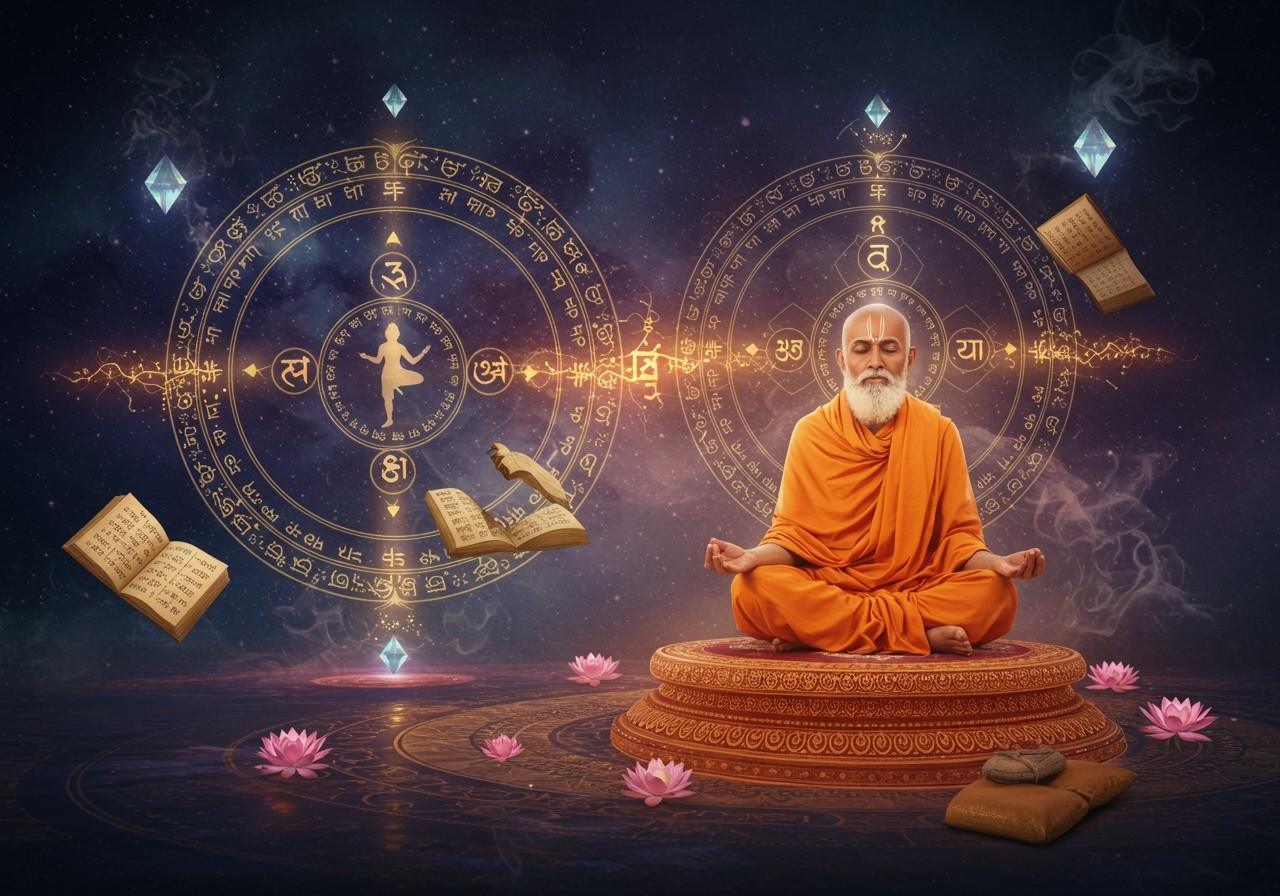
Indian philosophy boasts a rich and intricate history, with Mimamsa and Yoga playing pivotal roles in shaping cultural and spiritual practices. Mimamsa, meaning “reflection” or “revered thought,” delves into the interpretation of Vedic texts and emphasizes ritual actions. Yoga, on the other hand, focuses on achieving physical, mental, and spiritual well-being. Understanding the interplay between these two philosophies can deepen one’s appreciation for tradition and enhance personal practices.
Understanding Mimamsa Philosophy
Mimamsa, one of the six orthodox schools of Hindu philosophy, centers around ritual actions (Karma) and the interpretation of sacred texts. Founded by the sage Jaimini, its foundational texts, such as the Mimamsa Sutras, explore concepts like Dharma (duty) and Apurva (the unseen force generated by rituals). Key principles include:
- Dharma: Dharma represents duty, moral order, and righteous conduct. It guides individuals towards fulfilling their responsibilities and living a life of purpose. It emphasizes the importance of ethical actions and their impact on individual and cosmic harmony.
- Apurva: Apurva refers to the unseen and imperceptible results generated by performing rituals. It is the metaphysical link between the ritual action and its eventual fruition. This concept highlights the power of rituals to create positive change beyond the immediate physical realm.
- Yajnas: Yajnas are sacred sacrifices and rituals performed to maintain cosmic order and balance. They are considered essential for upholding the harmony of the universe and ensuring the well-being of all beings. These rituals involve specific offerings and chants, connecting individuals to the divine.
Mimamsa underscores the importance of rituals in daily life as a means of connecting with the divine and fulfilling one’s Dharma.
Yoga Philosophy and Practice
Yoga, as outlined by Patanjali in the Yoga Sutras, is a holistic practice encompassing physical, mental, and spiritual disciplines. It requires a well-controlled mind, free from worldly desires, to achieve its full potential. Yoga offers various paths to achieve this state, including:
- Karma Yoga: The path of selfless action, where actions are performed without attachment to results, cultivating a sense of duty and dedication. It emphasizes the importance of performing one’s duties with mindfulness and sincerity.
- Bhakti Yoga: The path of devotion and love for a higher power, fostering a deep connection with the divine through prayer, chanting, and worship. It emphasizes the importance of cultivating love and devotion as a means of spiritual growth.
- Jnana Yoga: The path of knowledge and wisdom, seeking self-realization through study, reflection, and contemplation. It emphasizes the importance of understanding the true nature of reality and the self.
- Raja Yoga: The path of meditation and mental discipline, aiming to control the mind and achieve a state of inner peace. It utilizes techniques like asanas and pranayama to prepare the body and mind for deep meditation.
Central concepts within Yoga include:
- Asanas: Physical postures that promote strength, flexibility, and balance, preparing the body for meditation and enhancing overall well-being. They are more than just physical exercises; they are tools for cultivating mindfulness and inner awareness.
- Pranayama: Breathing techniques that regulate the flow of prana (life force), calming the mind and promoting vitality. These techniques help to control the breath and enhance the flow of energy throughout the body.
- Dhyana: Meditation practices that cultivate focus, concentration, and inner peace, leading to a deeper understanding of the self. Through regular meditation, practitioners aim to transcend the limitations of the mind and experience a state of pure consciousness.
Yoga promotes holistic well-being through disciplined practice and the integration of physical, mental, and spiritual elements.
Philosophical Connections
Mimamsa and Yoga, while distinct, complement each other in various ways:
- Karma: Mimamsa’s emphasis on ritual actions aligns with the principles of Karma Yoga, emphasizing the importance of selfless action and duty. Both philosophies recognize the impact of actions on individual and cosmic harmony.
- Dharma: Both Mimamsa and Yoga emphasize the importance of Dharma, or duty, as a guiding principle for spiritual growth. They highlight the significance of living a life of purpose and fulfilling one’s responsibilities.
- Sacred Texts: Mimamsa’s focus on interpreting sacred texts enhances the understanding of Yoga practices and their philosophical underpinnings. It provides a framework for interpreting the deeper meaning behind the teachings and practices of Yoga.
These connections enrich personal and spiritual development, allowing practitioners to integrate the wisdom of both traditions.
Yoga Mimamsa: Books and Journals
For those interested in delving deeper into the connections between Yoga and Mimamsa, the following resources offer valuable insights:
- Books: “Yoga Mimamsa” by Swami Satyananda Saraswati provides a comprehensive exploration of the intersection of these two philosophies.
- Journals: The “Yoga Mimamsa Journal” offers scholarly articles and research on the philosophical aspects of Yoga, including its relationship with Mimamsa.
These texts offer a deeper understanding of traditional philosophies and their practical applications.
Practical Implications for Modern Practitioners
Integrating the principles of Mimamsa and Yoga can enhance contemporary practices:
- Rituals in Yoga: Incorporating Mimamsa’s emphasis on rituals can add a layer of mindfulness and intention to daily Yoga routines. This can involve simple rituals like lighting a candle or incense before practice, creating a sacred space for deeper connection.
- Intention: Understanding Mimamsa’s focus on Dharma and intention can strengthen the purpose behind Yoga practices. By setting clear intentions and connecting with the deeper meaning of the practice, practitioners can enhance their overall experience.
Preserving tradition while adapting to modern lifestyles can significantly benefit holistic well-being.
How Poojn.in Supports Your Yoga and Mimamsa Practice
Poojn.in offers a curated selection of products to enhance your Yoga and Mimamsa practices. Explore our collection of items specifically chosen to support your spiritual journey:
- Bel Malas: Traditional prayer beads crafted from the sacred Bel tree, perfect for japa meditation and connecting with Mimamsa principles.
- Mangalam Camphor: Pure camphor for creating a purifying and sacred atmosphere during rituals and Yoga practice.
- Shiva Murti: A beautiful representation of Lord Shiva, inspiring devotion and focus during meditation.
Visit Poojn.in to discover a wide range of products designed to support your spiritual practices. Our knowledgeable customer service team can assist you in finding the perfect items to deepen your connection with Yoga and Mimamsa.
Conclusion
Exploring the interconnectedness of Mimamsa and Yoga enriches our understanding of Indian philosophical traditions. Mimamsa’s emphasis on rituals and Dharma beautifully complements Yoga’s focus on holistic well-being. By integrating these principles, modern practitioners can deepen their spiritual practices and lead more fulfilling lives. Embracing these ancient philosophies allows us to honor tradition while finding balance and harmony in today’s world.


